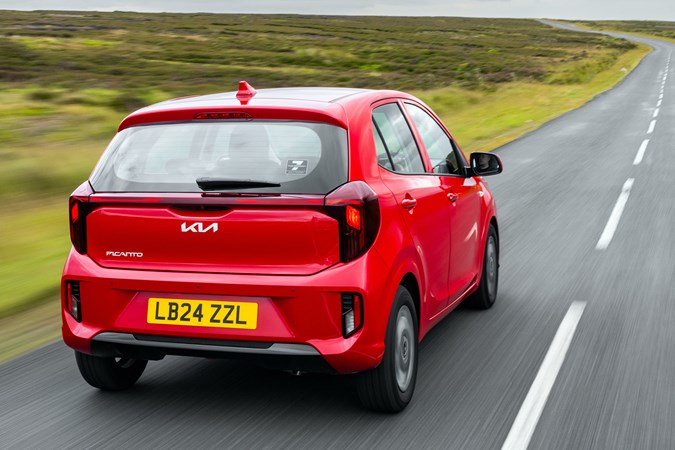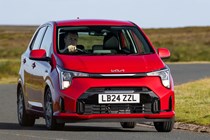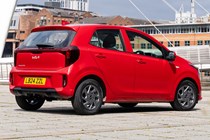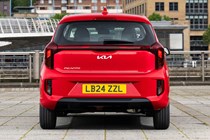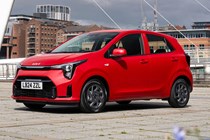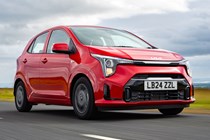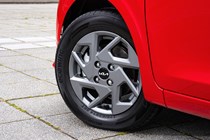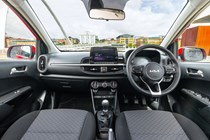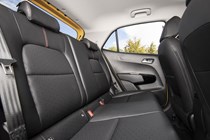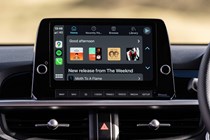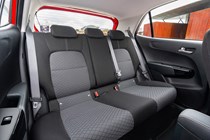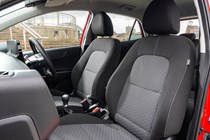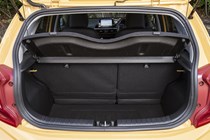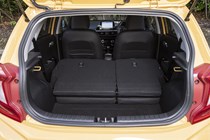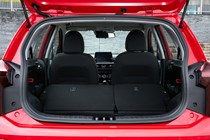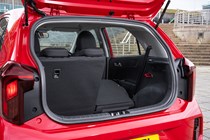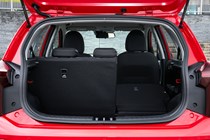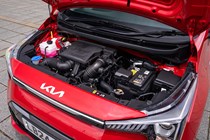Kia Picanto engines, drive and performance

- Two engines available
- Non-turbo 1.0-litre the most sensible
- But more powerful 1.2 is much more fun
Petrol engines
The facelift may have changed the way the Picanto looks, but under the skin, it’s as it was. There are two engines available in the Kia Picanto – a 1.0-litre three-cylinder unit, and a larger 1.2-litre four cylinder. The old 99hp turbo has been dropped, more’s the pity.
The basic, 1.0-litre engine provides 62hp. Performance is on a par with its city car rivals, though, and in regular day-to-day driving you don’t need to work the base Picanto very hard except in a few scenarios, such as joining a main road without much of a run-up. The thrummy three-cylinder soundtrack and slick five-speed manual gearbox mean this isn’t too taxing a chore, however.
The smaller engine is also available with a five-speed automated manual transmission. We’ve sampled this in the mechanically identical Hyundai i10 and have to conclude that those who need a small automatic car should look elsewhere. It’s slow, unresponsive and jerks between gearchanges like a new driver figuring out clutch control.
The larger 77hp 1.2-litre four-cylinder fitted to GT-Line S is very usable. With 15hp more to play with, plus a significant amount more torque, we found that it pulls the Picanto around much more willingly. It’s more than capable of keeping up with the flow, and that’s all the way up to motorway speed. We’re sad to see the old 99hp turbocharged model is no longer offered – as a more insurance and wallet-friendly alternative to more traditional hot hatches, it was an amazingly likable little car.
What’s it like to drive?
- Surprisingly fun handling for all versions
- Go for the ‘2’ model if you want a smooth ride
- No complaints from the 1.2, even on the motorway
The Picanto’s wheel-at-each-corner stance and light controls mean it’s good fun to drive regardless of which engine or trim level you opt for. In terms of ride quality, if you value smoothness, go for the ‘2’ version, but for fun, you’ll need a GT-Line.
Stiff suspension means that while you do feel a few more bumps than you might in a Suzuki Ignis, the Picanto corners flatly and there are impressive levels of grip on offer. If comfort is your priority, the 14-inch wheels of entry-level cars do an admirable job of dealing with potholes and broken road surfaces. The GT-Line has 16-inch wheels which while great to look at do transmit a sharper edge through to the cabin.
Put simply, though, the Picanto is perfectly tuned for where it will spend most of its time, with a tight turning circle and easy controls making it perfect for city driving. Those same qualities shine through on a twisting country lane, too.
